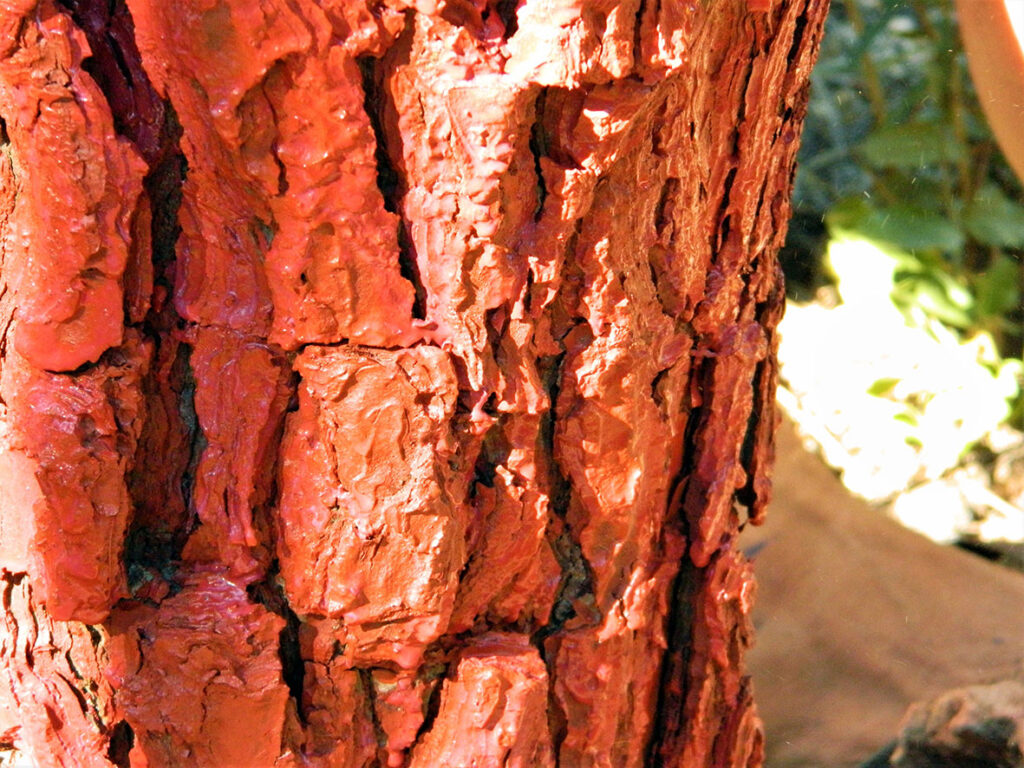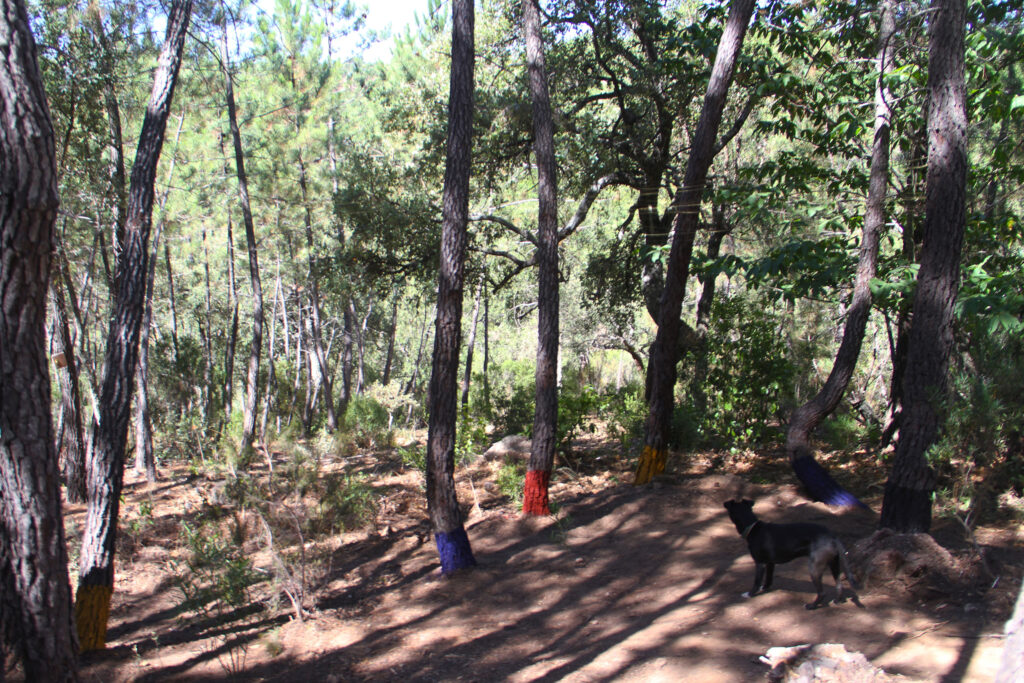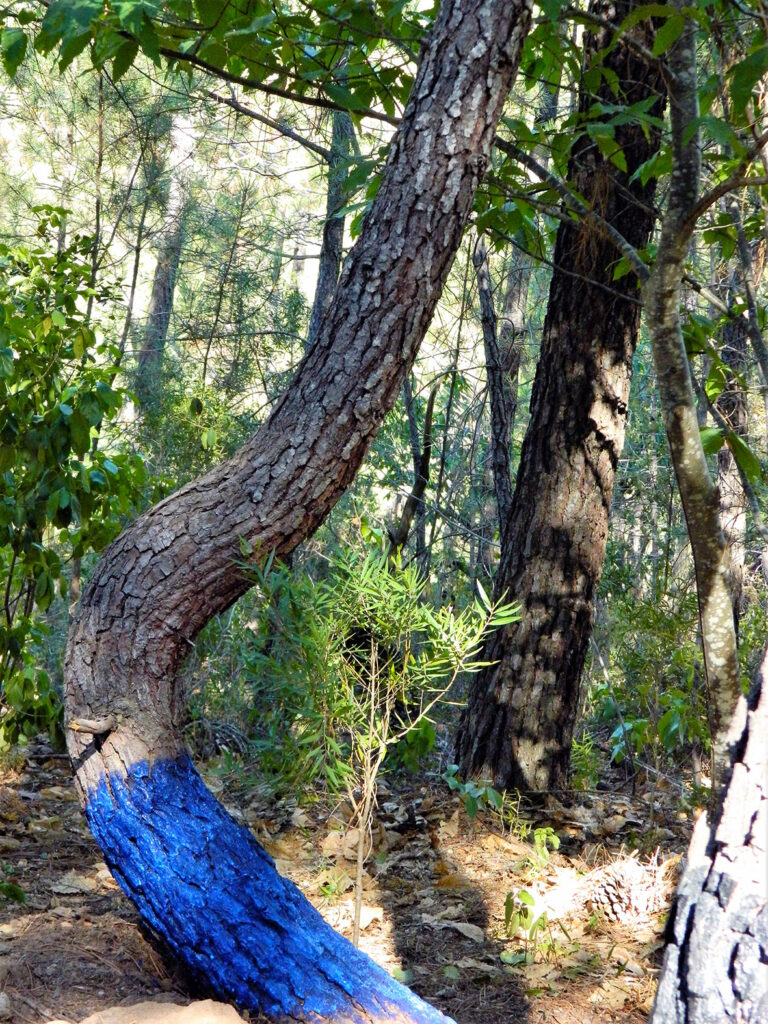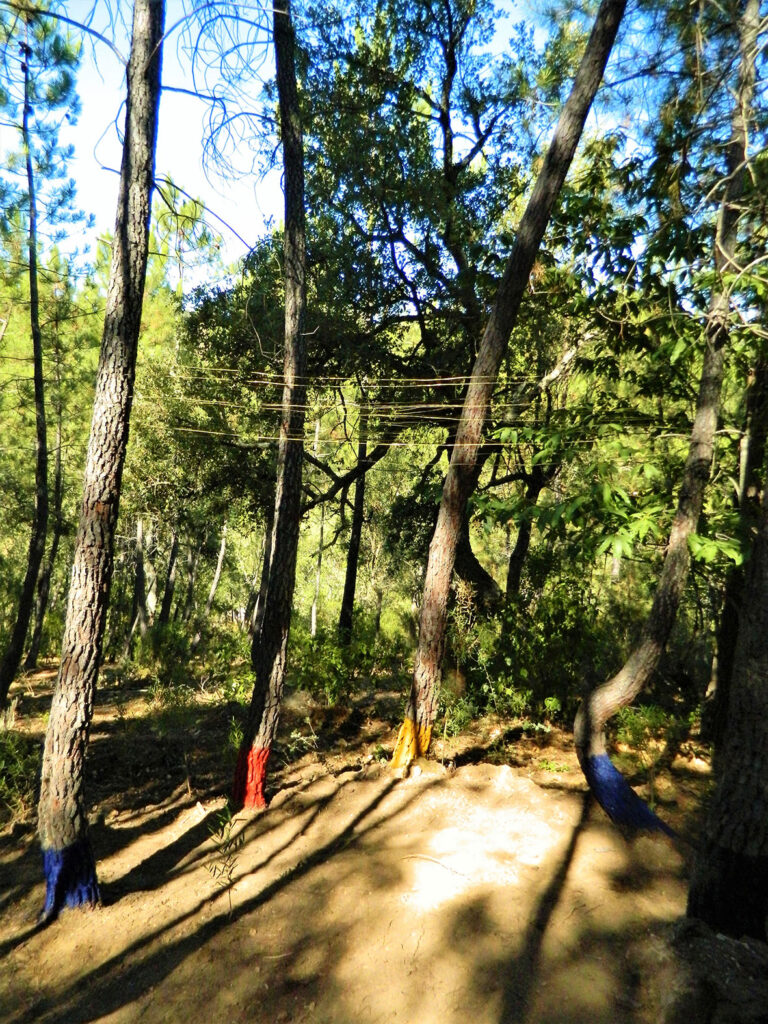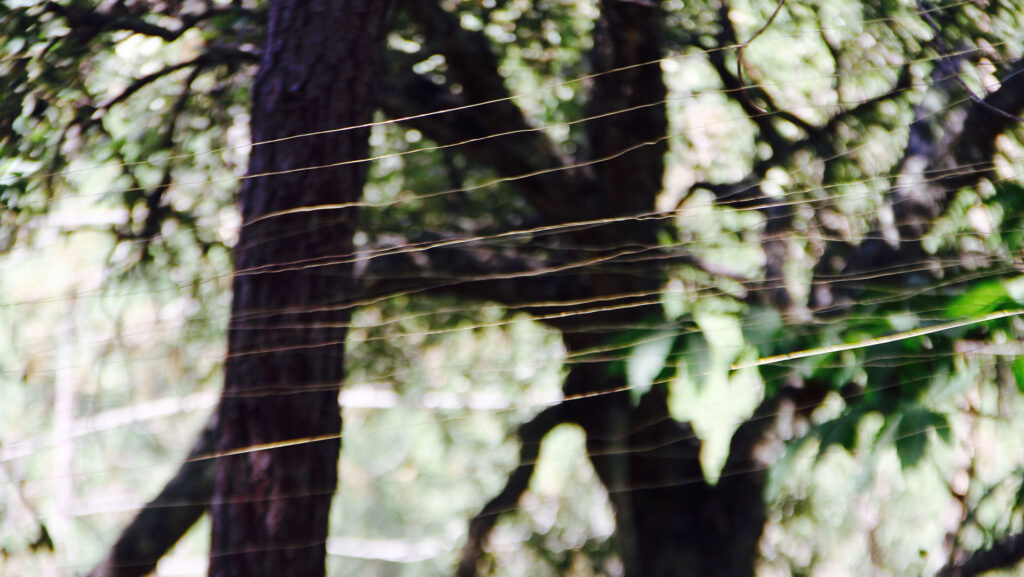
Áurea
Aurea
Valdelarte, Centro de Arte y Naturaleza.
Sierra de Aracena, Huelva. España. 2017.
Áurea, de oro o dorado en latín, simboliza lo sagrado, la naturaleza como espacio de respeto y adoración, la vinculación entre lo humano y lo divino, nuestro origen.
Un cúmulo de hilos dorados une seis árboles del bosque, hilos finos que tejen el espacio como sucede con una tela de araña. Debido al reflejo del sol, la pieza aparece y
desaparece a la vista dependiendo de la hora del día. También, con la ayuda de la brisa, el movimiento respiratorio de los hilos simbolizan la conexión entre los árboles, lo que nos transmite y percibe la propia naturaleza, vida.
Las bases de los árboles se han cubierto con pigmentos naturales en color rojo, ocre, negro y azul. Como las huellas de nuestros ancestros, marcamos el espacio como signo de nuestra presencia, mostrando la naturaleza como nuestro hogar, el espacio al que nos vinculamos. Marcamos para llamar la atención, para mirar de otra forma, como ritual para redescubrir o remarcar lo sagrado.
El nombre latino de la pieza se remonta al pasado romano de Valdelarco, espacio donde se ubica el bosque de Valdearte.
Áurea, from gold or golden in Latin, symbolises the sacred, nature as a space of respect and worship, the link between the human and the divine, our origin.
A cluster of golden threads connects six trees in the forest, fine threads that weave the space like a spider’s web. Due to the reflection of the sun, the piece appears and disappears from view depending on the time of day. Also, with the help of the breeze, the respiratory movement of the threads symbolises the connection between the trees, which is transmitted and perceived by the nature itself, life.
The bases of the trees are covered with natural pigments in red, ochre, black and blue. Like the footprints of our ancestors, we mark the space as a sign of our presence, showing nature as our home, the space to which we are linked. We mark to attract attention, to look at it differently, as a ritual to rediscover or highlight the sacred.
The Latin name of the piece goes back to the Roman past of Valdelarco, the place where the forest of Valdearte is located.
